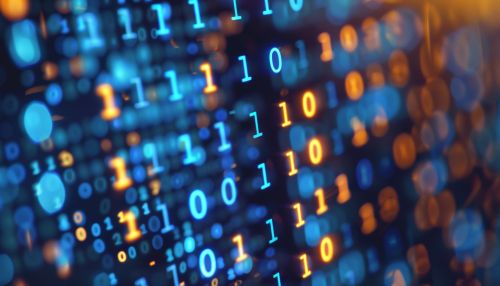Bit
Definition
A bit is the most basic unit of information in computing and digital communications. The name is a portmanteau of binary digit. The bit represents a logical state with one of two possible values. These values are most commonly represented as either "1" or "0", but other representations such as true/false, yes/no, on/off, or enabled/disabled are also commonly used.
History
The concept of the binary digit is attributed to Gottfried Leibniz, a 17th-century philosopher and mathematician. Leibniz developed the binary number system, which is the foundation for bits. However, the term "bit" was first used in a computing context by Claude E. Shannon in his seminal 1948 paper "A Mathematical Theory of Communication".


Binary System
The binary system is a number system that uses only two values, 0 and 1, to represent data. It is the basis for all binary code and data storage in computing systems. Each bit in a binary system can represent two states, on or off, which are typically represented by the numbers 1 and 0 respectively. This system is used because it is simple to implement with digital electronic circuitry using logic gates.
Bit as a Measure of Information
In the context of information theory, a bit is defined as a measure of the information content of a message. This is often referred to as the Shannon information or the entropy of the message. The information content of a message in bits is a function of the probability of the message, with more probable messages having less information content.
Bit as a Measure of Data
In computing, a bit is also used as a measure of data. Data is stored in bits in a computer's memory, and the amount of data is often measured in larger units such as kilobits (Kb), megabits (Mb), gigabits (Gb), and terabits (Tb), where 1 kilobit = 1024 bits, 1 megabit = 1024 kilobits, 1 gigabit = 1024 megabits, and 1 terabit = 1024 gigabits.
Bit Operations
Bit operations are fundamental to computer programming. These operations include bitwise AND, OR, NOT, XOR, bit shifts, and bit rotations. Bitwise operations are used in many areas of programming, including cryptography, graphics, communications over networks, and more.
Significance of Bits in Computing
Bits are fundamental to the operation of computers and digital systems. They are used to represent data and instructions in a form that can be processed by a computer. The processing power of a computer is often measured in terms of the number of bits it can process at a time, known as its word size. For example, a 32-bit computer can process 32 bits of data at a time.
